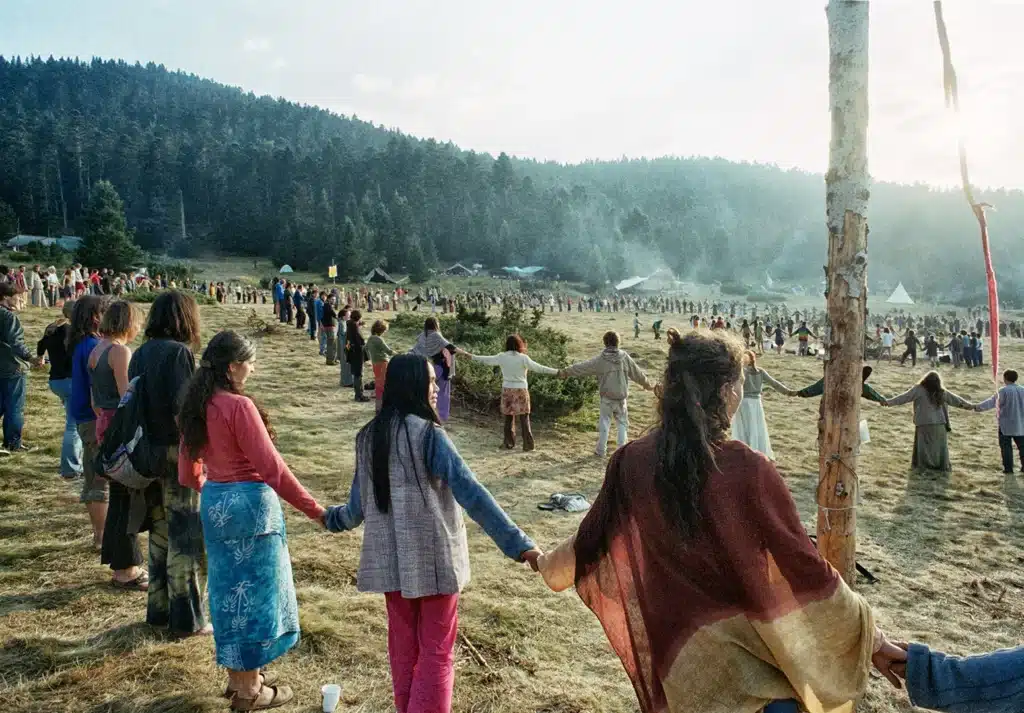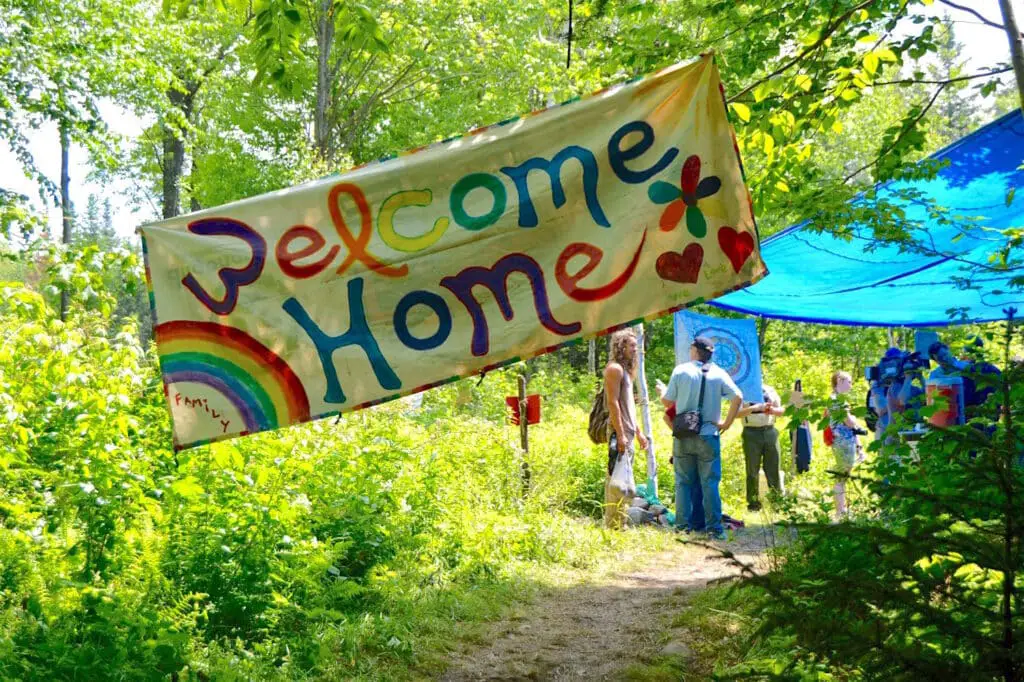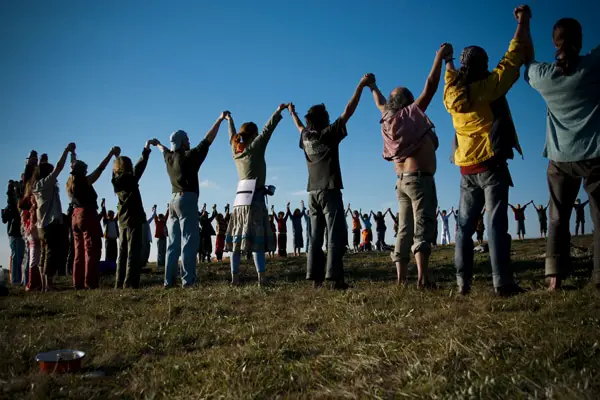What Is The Rainbow Family Of Living Light
Introduction
What Is The Rainbow Family Of Living Light: The Rainbow Family of Living Light, often referred to simply as the Rainbow Family, is a loosely-knit, countercultural community that gathers annually in various natural settings around the world. The Rainbow Family, founded in the late 1960s, promotes peace, love, and environmental sustainability.It represents a diverse group of individuals who come together to celebrate unity, community, and the beauty of nature.
The Rainbow Family comes from the countercultures of the 1960s and 1970s, which supported anti-war action, environmental protection, living in groups, and rejecting mainstream materialism. It’s important for this group to be open and accepting, so their name includes people of all colors and countries.
The Rainbow Gathering, which happens every year in a wild, remote area from July 1st to July 7th, is one of the most well-known events put on by the Rainbow Family. Many thousands of people from different countries and backgrounds come to these events because they all want to build a temporary community that is founded on mutual respect and harmony.
In this introduction, we will delve into the history, values, and practices of the Rainbow Family of Living recessed Light, looking into how this one-of-a-kind countercultural movement has survived for decades and is still fighting for social and environmental change. From its founding ideals to its yearly get-togethers, the Rainbow Family is still a sign of unity and the counterculture’s lasting spirit.

What is the Rainbow Family type?
The term ‘rainbow family’ refers to a family with parents of the same sex bringing up a child, or an LGBTQ+ parented family. Rainbow families, like all families, come in all shapes and sizes. They include same-sex families and gender-diverse families. That might be 2 mums or 2 dads.
There isn’t a normal “family” feel to the Rainbow Family. Instead, it refers to a countercultural group of people who share ideas and goals but are not formally organized. The Rainbow Family is made up of a lot of different kinds of people who get together in different kinds of nature to enjoy community, unity, and the wonders of nature.
The Rainbow Family defines “family” as its members’ connection and companionship, not their biological or nuclear family. Rainbow Family is considered a “tribe” or “gathering” not a family.
Members of the Rainbow Family range in age, background, and way of life. They might both care deeply about peace, love, taking care of the earth, living in community, and rejecting modern consumerism. People of all colors, backgrounds, and styles are welcome at the Rainbow Family, which supports unity and diversity.
If you share the same values and want to build short intentional communities in the outdoors for events such as the Rainbow Gatherings, you are part of the Rainbow Family. Even though they don’t have a traditional family structure, it stands for the family they selected and the value of coming together to enjoy peace, love, along with living in harmony with nature.
Who are the rainbow people of Living Light?
The Rainbow Family is a loose-knit group of people from throughout the United States and other countries. Since the first gathering near Strawberry Lake on the Arapaho National Forest in 1972, the incident has taken place on different national forests each year.
“Rainbow individuals from Living Light” is another name for the Spectrum Family of Living Light, an informal counterculture group that meets in nature places around the world. The phrase “rainbow people” is a poetic and symbolic way to describe the people who live in this town.
The Rainbow Family values peace, love, environmental responsibility, and community. Members of this community come from all backgrounds and ages to attend Rainbow Gatherings. Members can celebrate their values and principles at these temporary intentional communities in distant natural locations.
In “rainbow members of Living Light,” “What It Means Light” comes to the group’s goal of living in balance with nature, leaving less of an impact on the environment, and making their lives simpler. It shows how simple, eco-friendly, and connected they are to the Earth they are.
People who live a countercultural life are known as the “rainbow people of Living Light” by the Rainbow Family of Living Light. They build planned communities and value collaboration, diversity, peace, love, and caring for the environment.
What does the Rainbow Family do?
On the webpage for the USDA Forest Service, it says, “The Rainbow Family is responsible for site rehabilitation.” In the resource security plan, rules are laid out. Many people have stayed at past events to help clean up with the paid a local seller to take away their trash.
The Rainbow Family is a countercultural community known for its gatherings and its commitment to certain principles and activities. Here’s an overview of what the Rainbow Family does:
Rainbow Gatherings:
Rainbow Gatherings, annual events in natural locations worldwide, are the Rainbow Family’s main activity. These gatherings typically take place from July 1st to July 7th and draw participants from diverse backgrounds. During Rainbow Gatherings, members create temporary intentional communities in remote natural locations.
Communal Living:
Rainbow Gatherings promote communal living and cooperation. Participants camp together, share meals, and work together to create a sense of unity and community. This communal living experience is a central aspect of Rainbow Gatherings.
Council Meetings:
A big part of Rainbow Celebrations is the council meetings. Council circles are places where people get together to talk about important problems, make decisions based on consensus, and share their ideas and emotions. The group’s approach to non-hierarchical choices and building consensus is shown by the council meetings.
Peace and Non-Violence:
Peace and nonviolence are Rainbow Family priorities. The group tries to keep meetings amicable and resolve conflicts peacefully.
Environmental Stewardship:
Being aware of the environment is an important part of the members of the Rainbow Family. Environmental stewardship activities, like Leave No Trace, are often done by members to keep their meetings from having too much of an effect on the natural environment. They also want to encourage sustainability and a stronger relationship with the Earth.
Cultural and Creative Activities:
There are many cultural and artistic things to do at Rainbow Gatherings, such as music, art, classes, and ceremonies. A lot of the time, participants share their artistic skills, play music, make art installations, and give workshops on a wide range of topics, such as spirituality, sustainability, and holistic health.
Inclusivity and Diversity:
The Rainbow Family emphasizes inclusivity and diversity, welcoming people of all backgrounds, ages, and walks of life. The group’s name, “Rainbow Family,” symbolizes unity among all colors and walks of life.
Activism:
Many members of the Rainbow Family are involved in environmental and social justice activism. They may participate in protests, advocacy campaigns, and community service projects aligned with their values.
Alternative Lifestyle:
Some Rainbow Family members practice unorthodox lifestyles that reflect their beliefs of simplicity, sustainability, and community living outside of gatherings.
The Rainbow Family lives in a community and works to promote peace, care for the earth, be creative, and value unity, diversity, and nonviolence. The yearly Rainbow Gatherings are at the center of these events. That’s where participants celebrate their beliefs and way of life.
Who started the Rainbow Family?
Inspired in large part by the first Woodstock Festival, two attendees at Vortex, Barry “Plunker” Adams and Garrick Beck, are both considered among the founders of the Rainbow Family.
Nobody can be called the founder of the Purple Family of Living Light. Instead, it grew out of the social and countercultural campaigns of the 1960s and 1970s. Its roots can be found in different people and groups who were a part of the larger cultural and social changes of that time.
The 1970 Oregon Vortex I music festival helped form the Rainbow Family. This festival attempted to deter adolescents from violence during anti-Vietnam War rallies. Over time, communal values and anti-establishment emotions inspired events like the Rainbow Family’s yearly Rainbow Gathering.
The Rainbow Family was built on shared values and ideas. Through grassroots efforts, it promotes peace, cooperation, and a link to nature. The Diamond Family is autonomous and doesn’t have a hierarchy on purpose, so there is no founder.
What is rainbow light called?
This is called refraction. A voila, the visible light spectrum is revealed to us as red, orange, yellow, green, blue, indigo, and violet. What viewing conditions do you need? In order to see a rainbow you need to be placed under a clear sky between the sun and a rain shower.
Rainbow light that you see in nature is often called “sunlight” as well as “white light.” Because it is made up of every color in the visible range, sunlight looks white to our eyes. Dispersion, on the other hand, is what happens to sunshine when it goes through drops of water in the air, like when it rains.
As sunshine spreads, it splits into its colors as light rays stretch across water droplets. This beautiful curve is our rainbow.
From the outside to the inside of a rainbow, the colors are generally red, orange in color, yellow, green in color, blue, indigo, as well as violet. Light’s wavelengths make up the visible bandwidth, which includes all the colors.
What do we call those who identify with the rainbow?
In the original invitation, spread throughout the United States in 1971, the “Rainbow Family Tribe” referred to themselves as “brothers & sisters, children of God”, “Families of life on Earth”, “Friends of Nature & of all People” and “Children of Humankind”.
It is common to call those who are part of the Rainbows are a Family in Loving Light “rainbow people.” It’s a nickname or label used to describe individuals who are part of this countercultural community. The Rainbow Family gathers and promotes peace, love, environmental responsibility, and community. The word “rainbow people” is not an official title, but it represents the group’s unity and diversity, emphasizing inclusivity and the idea that individuals from diverse backgrounds may unite around shared goals.
Is 3 rainbows rare?
Not many people have said they saw three rainbows in the sky at the same time. Secondary rainbows are so uncommon (just five occurrences in 250 years) that many experts wrote them off as unlikely as finding a pot of gold at the conclusion of a rainbow.
It is very uncommon to see three rainbows in the same time. A third rainbow doesn’t happen as often as a main or secondary rainbow. Before you can fully understand why rainbows are so rare, you need to know how they happen.
Primary Rainbow:
In terms of visibility and frequency, the “primary rainbow” is the standard bearer. A rainbow is created when light enters a drop of water, is reflected inside the droplet, and then exits the drop.
Secondary Rainbow:
The secondary rainbow is less common but still relatively familiar. It forms when sunlight undergoes two internal reflections inside the water droplet before exiting, resulting in a fainter and wider arc of colors, with the order of colors reversed compared to the primary rainbow.
Tertiary Rainbow:
Tertiary rainbows are even rarer than secondary rainbows and only appear outside of them. Because water droplets reflect three times as much light back into space, they make secondary rainbows with the same order of colors as the main rainbow. Tertiary rainbows are usually not very bright and can be hard to see because they are not inside the secondary rainbow.
Several factors contribute to the rarity of tertiary rainbows:
- The likelihood of tertiary rainbows depends on the size of raindrops. Smaller raindrops are more likely to produce tertiary rainbows.
- The angle of sunlight is crucial. Tertiary rainbows are more likely to occur when the sun is low in the sky.
- Tertiary rainbows require several internal reflections, which can only occur under the right atmospheric conditions.
Because of these things, seeing a secondary rainbow is a very unusual and impressive weather event. It needs certain conditions and isn’t a situation that most people come across very often. Seeing a tertiary rainbow is often an amazing experience that shows how beautiful and complicated weather optics can be.
What is rainbow powers?
Rainbows are an optical and meteorological event that happen when light bounces off of water droplets to the Earth’s atmosphere and forms a spectrum of light in the sky in the form of an arc of different colors. The user can make rainbows, shape them, and change them.
The rainbow or the idea that each color represents a skill may explain these powers. Fiction and art use “rainbow powers” to promote positivity, empowerment, and diversity, although their meaning is unknown.

Conclusion
The Rainbow Family from Living Light is a beautiful counterculture. Has been spreading love, peace and natural care around the world for decades. During the turbulent decades of the years 1960s and 1970s, the Rainbow Couple was born. They stand for living in a community, fighting war, and rejecting traditional materialism.
At the Rainbow Family Family’s biennial Rainbow Gathering. People with similar beliefs come together for a short time. To make a community built on cooperation and peace. Thousands individuals from all walks of life attend these events, which shows how strong the movement is.
As its name implies, the Rainbow Family promotes togetherness among all races and backgrounds. The Rainbow Family lives by this motto, emphasizing the need to overcome. Social divides and recognize the interdependence of all beings.
It reminds us that alternate lifestyles and worldviews are conceivable despite social constraints. The Rainbow Family’s commitment to environmentalism, non-violence. A more just and compassionate world has inspired generations of people seeking a more harmonious and sustainable lifestyle.
An oasis of hope in a world of division and strife, the Rainbow Family of Living Light reminds us that love, peace, and environmental care are crucial for the well-being of our planet and all its people.



